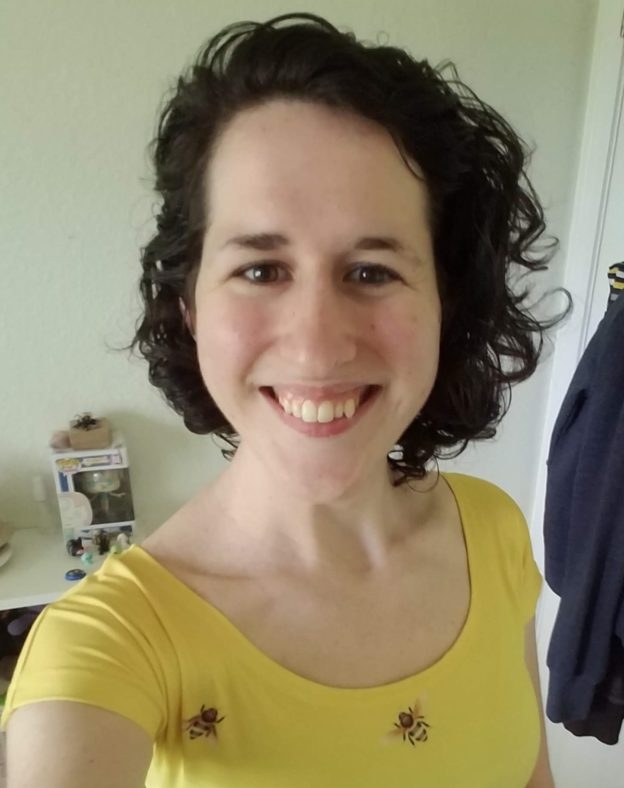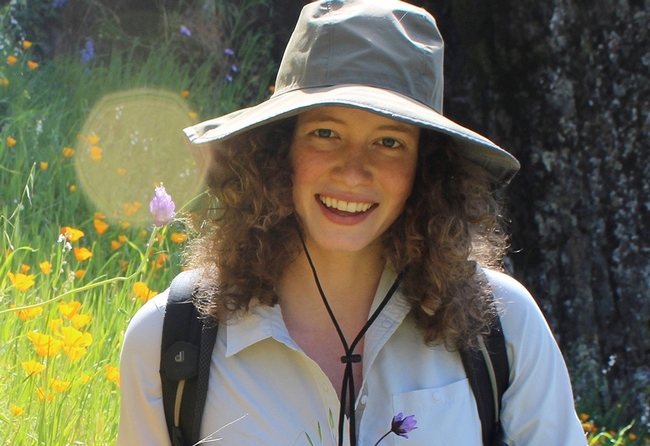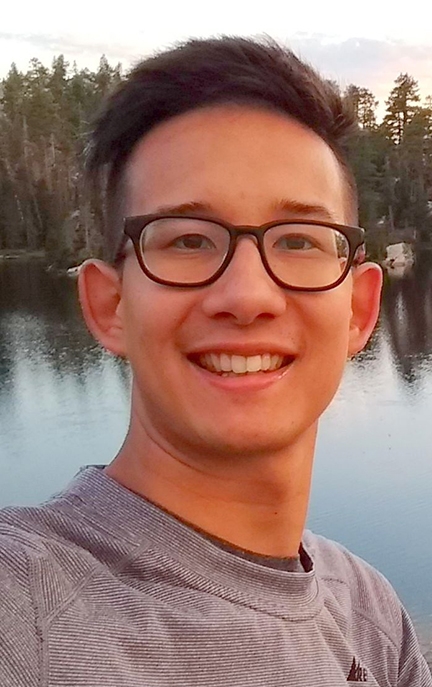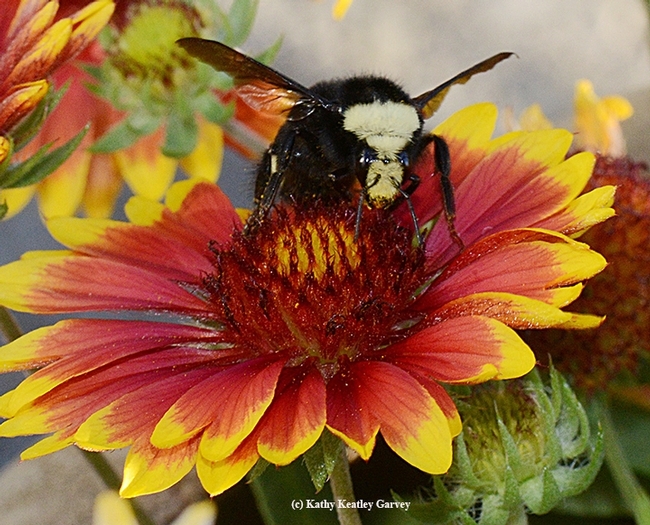
That's the beginning of the abstract of her research presentation, "Fungicide Impacts on Bumble Bees Are Mediated via Effects on Bee-Associated Fungi," that she delivered Nov. 1 in the mile-high city of Denver at the Entomological Society of America's annual meeting.
Rutkowski, a member of the lab of community ecologist Rachel Vannette, associate professor, UC Davis Department of Entomology and Nematology, and co-advised by community ecologist and professor Rick Karban, was participating in the 10-minute graduate student speech competition.
How did she do? She excelled! Rutkowski won first place, "The President's Prize," in her category, Plant-Insect Ecosytems, Ecology 3.
That's quite an achievement and well-deserved.
The remainder of her abstract: "Using two species, Bombus vosnesenskii and B. impatiens, we test the interactive effect of the fungicide propiconazole and fungal supplementation on the survival, reproduction, and microbiome composition of microcolonies (queenless colonies). We found that both bee species benefitted from fungi, but were differentially affected by fungicides. In B. vosnesenskii, fungicide exposure decreased survival while fungal supplementation mitigated fungicide effects. For B. impatiens, fungicide application had no effect, but fungal supplementation improved survival and offspring production. Fungicides altered fungal microbiome composition in both species, and reduced fungal abundance in B. vosnesenskii microcolonies, but not in B. impatiens, where instead fungal addition actually decreased fungal abundance. Our results highlight species-specific differences in both response to fungicides and the nature of fungal associations with bees, and caution the use of results obtained using one species to predict the responses of other species. These results suggest that fungicides can alter bee- fungi interactions with consequences for bee survival and reproduction, and suggest that exploring the mechanisms of such interactions, including interactions within bee-associated fungal communities, may offer insights into bumble bee biology and bumble bee conservation strategies." (Paper co-authored with Rachel Vannette, Eliza Litsey and Isabelle Maalouf)
Two other outstanding UC Davis doctoral students scored second place in their respective categories in the highly competitive events:
- Maureen Page, with the lab of pollinator ecologist Neal Williams, professor, UC Davis Department of Entomology and Nematology, presented "Optimizing Pollinator-friendly Plant Mixes to Simultaneously Support Wild and Managed Bees." She competed in the category, Plant-Insect Ecosystems: Pollinators. (Hannah McKenzie of Ohio State University won first place, The President's Prize.)
- Kyle Lewald, with the College of Biological Sciences and the Integrated Genomics and Genetics Graduate Group, but a member of the lab of molecular geneticist and physiologist Joanna Chiu, professor and vice chair of the UC Davis Department of Entomology and Nematology, competed in the category, Systems, Evolution and Biodiversity: Genetics and Molecular Biology. He titled his presentation: "Assembly of Highly Continguous Diploid Genome for the Agricultural Pest, Tuta absoluta." (Amanda Markee of the University of Florida took home first place, The President's Prize.)


At the ESA's annual meetings, students are offered the opportunity to present their research and win prizes. There are several components, ESA says, to the competition: 10-minute papers (oral), posters, and infographics. First-place winners receive a one-year free membership in ESA, a $75 cash prize, and a certificate. Second-winners score a one-year free membership in ESA and a certificate.
The 7000-member organization, founded in 1889 and headquartered in Annapolis, Md.,, is the world's largest organization serving the professional and scientific needs of entomologists and others in related disciplines. Its members are in educational institutions, health agencies, private industry, and government. The 2021 ESA president is Michelle Smith of Corteva Agriscience.
Attached Images:
